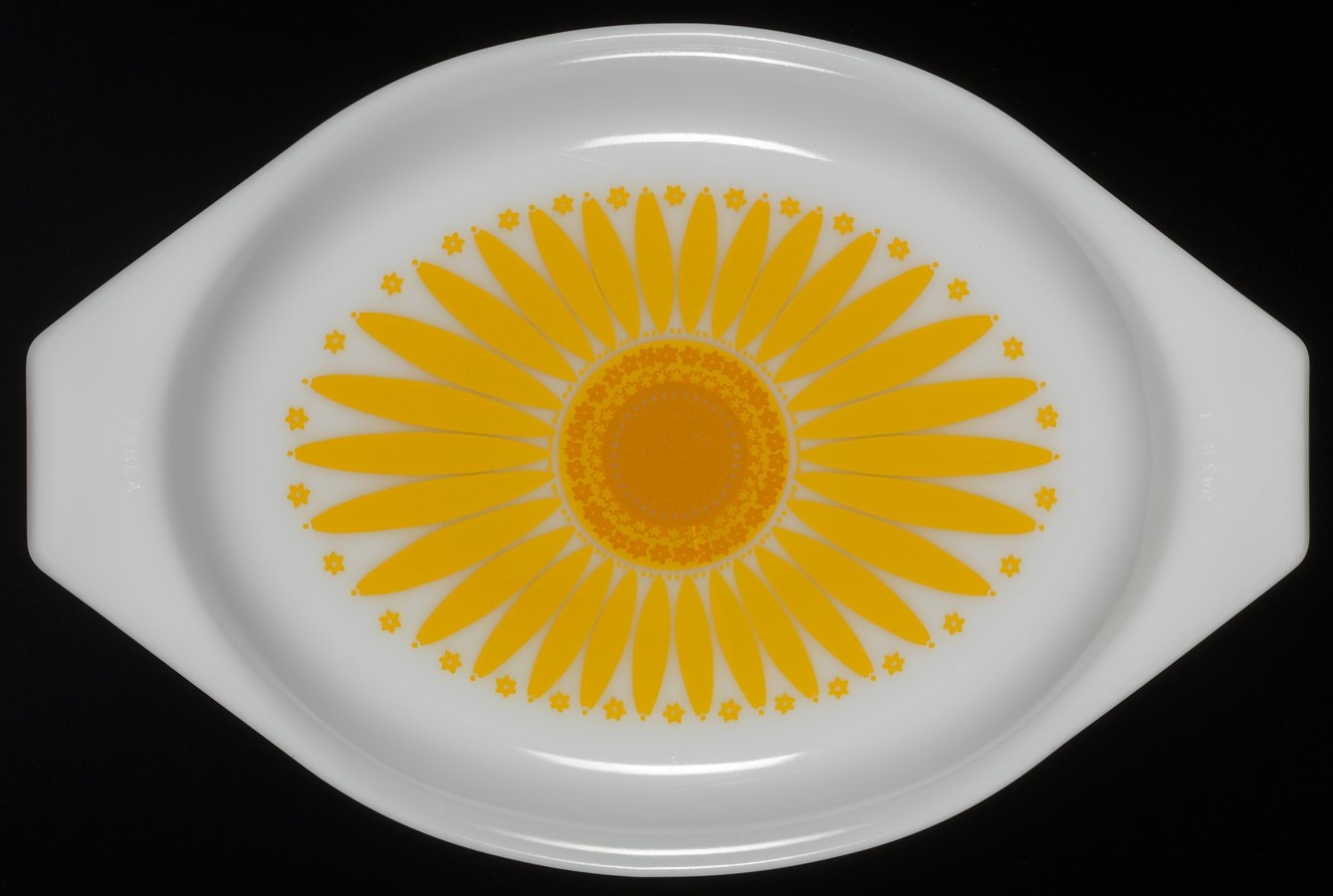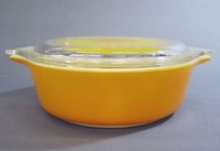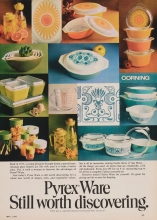“Put all the warm colors of this line on display…” suggests a 1969 dealer catalog. The release of the “New Gift Line” in late-1969 saw some bold new pattern designs including a promotional version of Daisy Pyrex ware. “Corning Welcomes you to cooking in the 70s.”
“What happens when you add cheery yellow flowers to famous Pyrex Ware? Daisy happens. And Daisy just happens to be the bright, sunny new way to make mealtimes happier and cleanup times easier,” proclaimed a 1969 advertisement.
Daisy was a popular standard pattern with this promotional spinoff available to the consumer market between 1969 and 1970. The promotional pattern is identical to the standard pattern, appearing on the 1 ½ quart Oval Casserole (043) and the 2 ½ quart Oval Casserole (045). As with the standard pattern the promotional design has either an orange or yellow solid-colored dish that includes an opal ware lid with a large bright yellow daisy on top. The only distinguishable difference is that the promotional Daisy pattern came with a wicker basket.
The promotional Daisy pattern retailed for $4.95 or $5.95. Daisy, along with Blue Doily and Navajo, was the first promotional pattern released with a wicker basket.
Corning Glass Works offered its first patterned opalware gift set in 1953 when the Heinz Baking Dish was sold in grocery stores. Widespread distribution of promotional patterns occurred after the overwhelming success of the 1956 release of seasonal “decorator casseroles.” Using existing Pyrex shapes, gift sets featured new patterns offered for a limited production time. They often came with mounters, cradles, or candle warmers and were advertised in the spring to appeal to Mother’s Day and summer wedding shoppers and in the fall to give the holiday gift-buyers something new. Corning continued to produce gift sets through 1983, creating nearly 135 different gift set patterns during that time. Corning intended these pieces to be sold for a limited time, and directed retailers to remove older, unsold promotions from the shelves.
Often, patterns used for these gift items were unnamed, or given names descriptive of the dish’s purpose, like “chip and dip set.” Collectors over the years have assigned names intended to be reflective of the specific pattern.







![New daisy Pyrex ware! [advertisement] New daisy Pyrex ware! [advertisement]](https://pyrex.cmog.org/sites/pyrex.cmog.org/files/styles/medium/public/Rakow_1000142939_crop_rgb.jpg?itok=wjtt8ms_)
